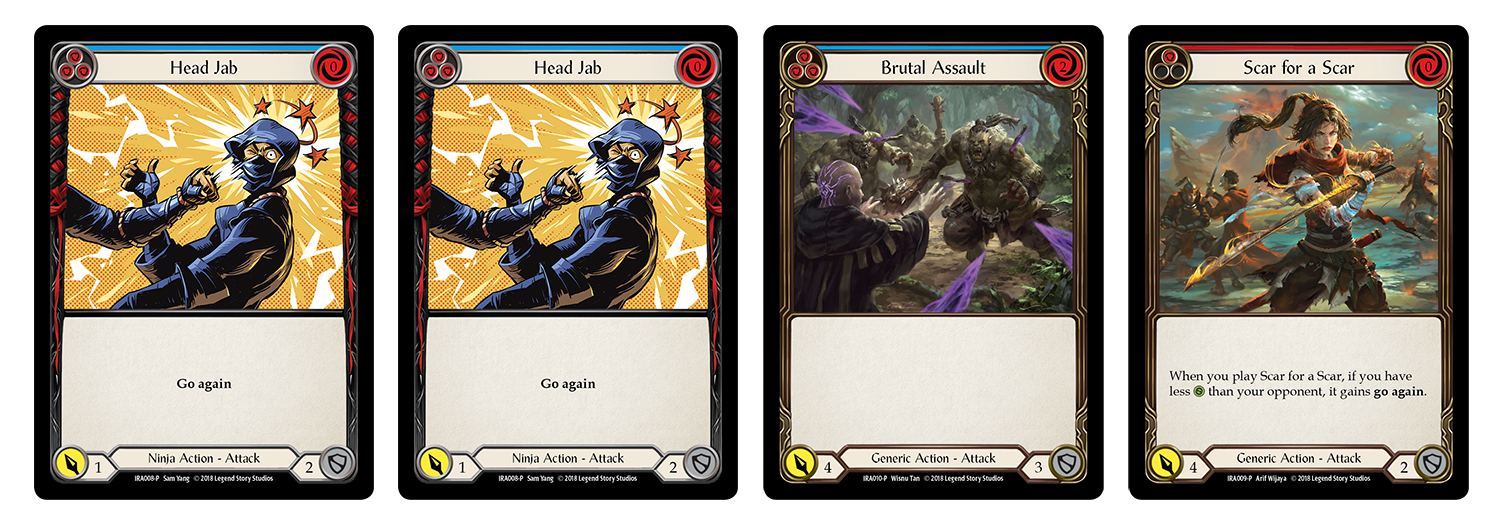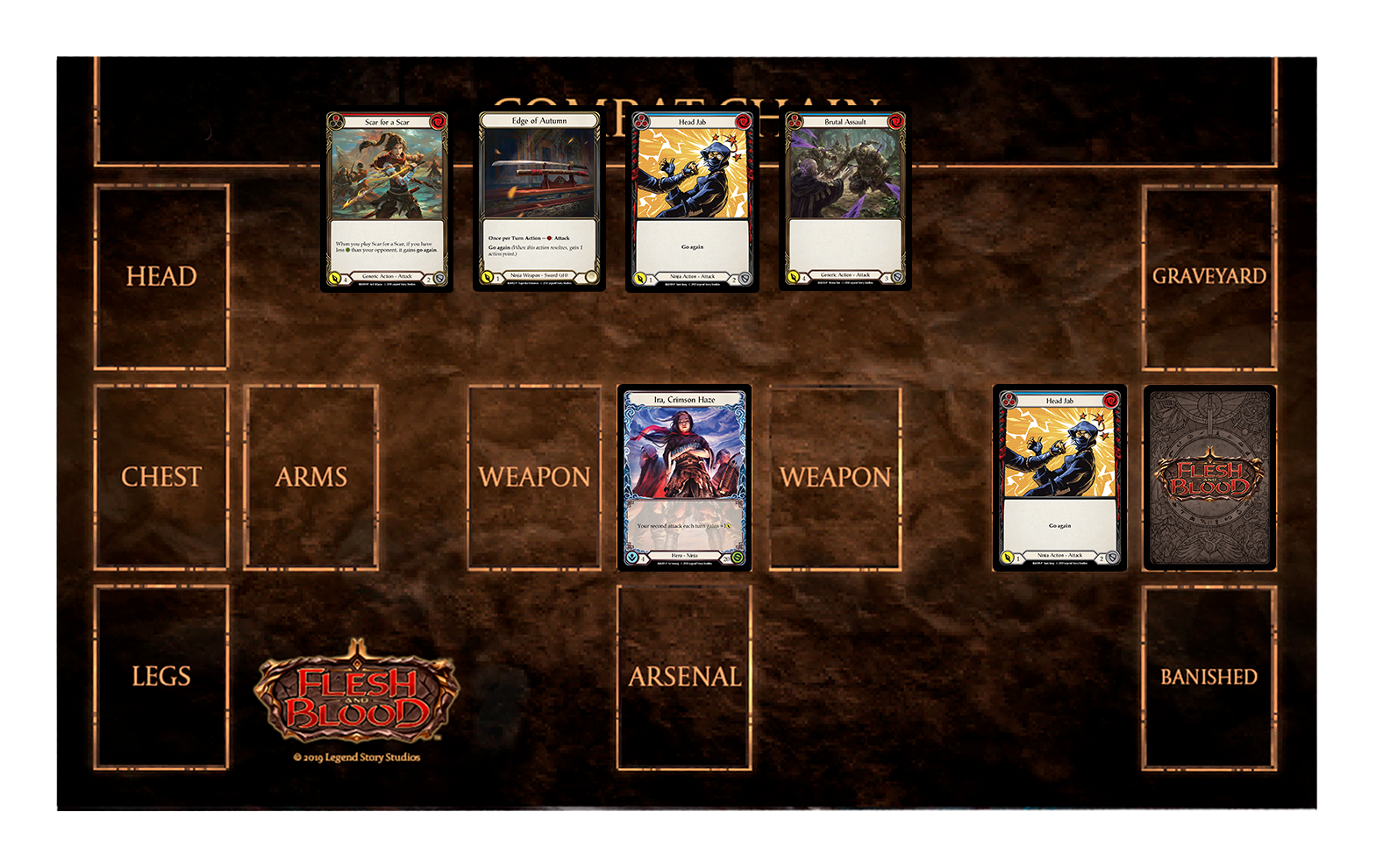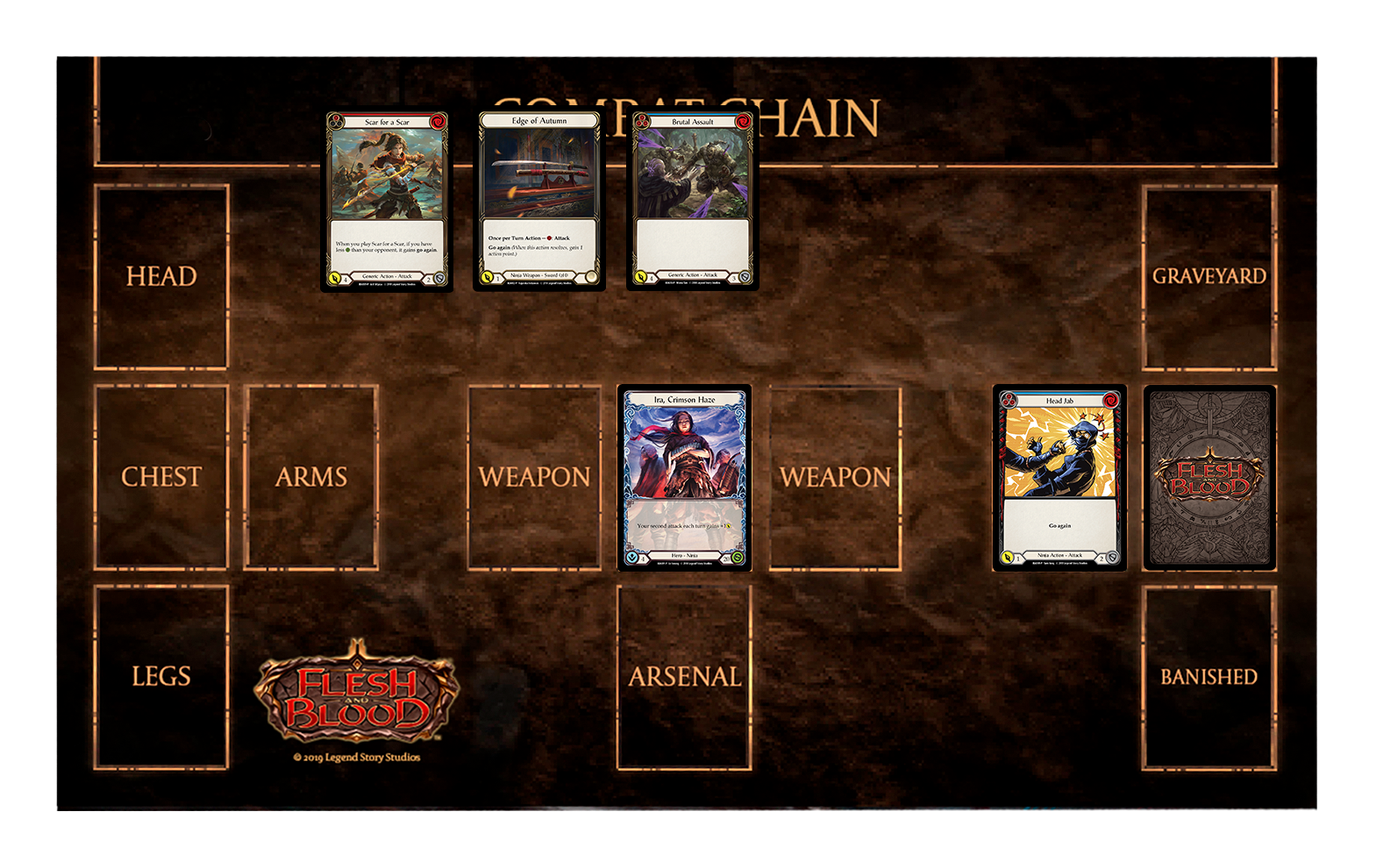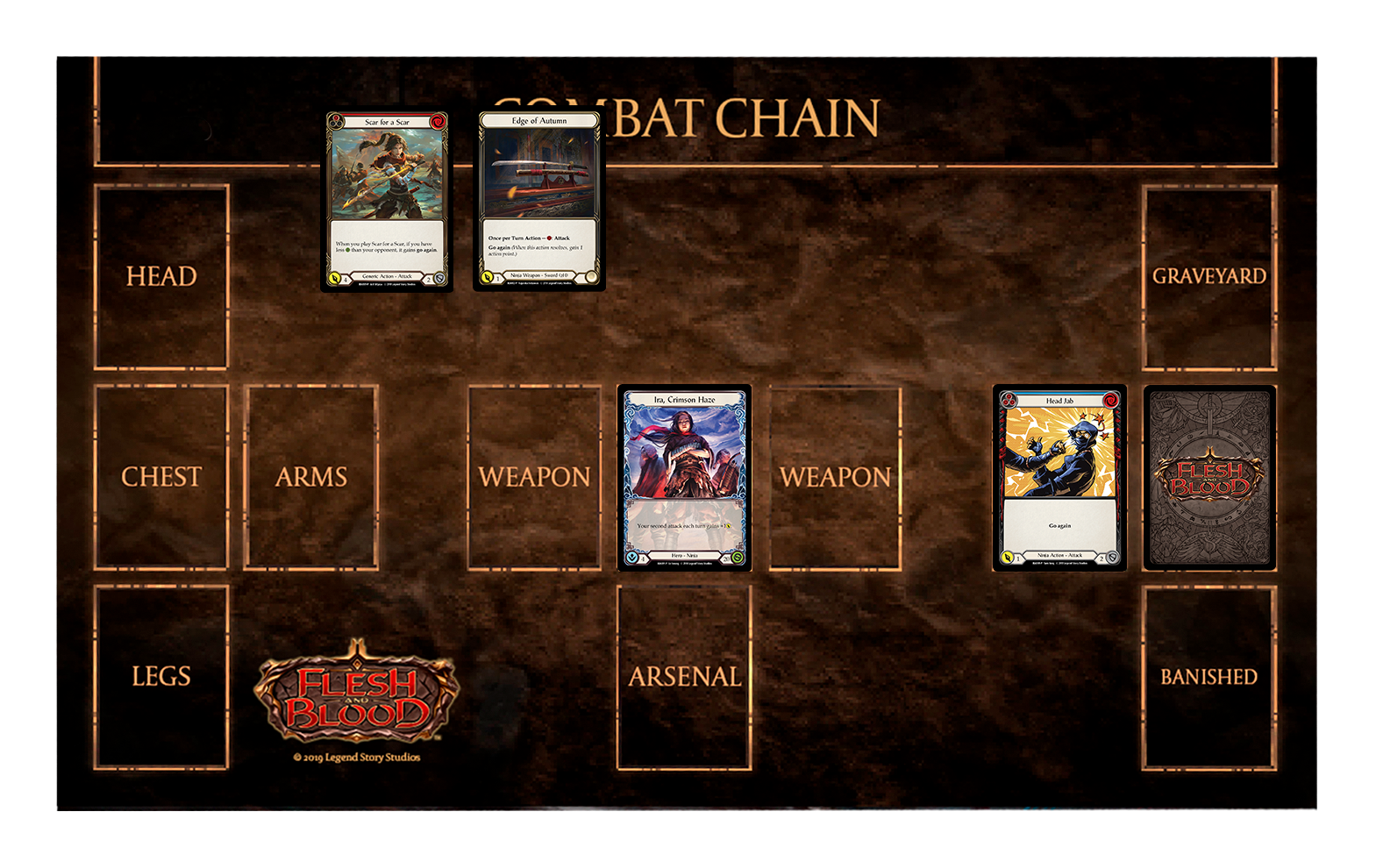The art of blocking is an essential skill in Flesh and Blood. Often the right or wrong blocks will determine the outcome of the game.
A simple way to optimise your blocks and figure out if blocking is worth it is to evaluate the last card in each of your hand. Let’s look at one example;
Your opponent is attacking you for 7 with a Flying Kick. Let’s assume that we are both at 15 life. At this point your hand is Head Jab, Head Jab, Brutal Assault, Scar for a Scar.

We can calculate that the most damage we can do with this hand is this sequence:

- Attack with Scar for a Scar (4 damage)
- Pitch Head Jab for 3 resources.
- Attack with Edge of Autumn (2 damage, 6 damage total)
- Attack with Head Jab (1 damage, 7 damage total)
- Attack with Brutal Assault (4 damage, 11 damage total)
Now it may be tempting to just take everything, and unleash a flurry for 11 damage upon your opponent – but let’s see what happens if we take the worse card out of this sequence.

- Attack with Scar for a Scar (4 damage)
- Pitch Head Jab for 3 resources.
- Attack with Edge of Autumn (2 damage, 6 damage total)
- Attack with Brutal Assault (4 damage, 10 damage total)
Now this outcome leaves us with a Head Jab, which we could use for blocking. Head Jab defends for 2. So by blocking with Head Jab we take 2 less damage, but on our turn we only do 1 less damage. I’d call that a winning line. But can we go further?

- Attack with Scar for a Scar (4 damage)
- Pitch Head Jab for 3 resources.
- Attack with Edge of Autumn (2 damage, 6 damage total)
By leaving Brutal Assault and Head Jab, we can use the Brutal Assault to defend for an additional 3 on top of the Head Jab that already defends for 2. However, we are giving up 4 damage to do that. Giving up 4 damage to defend 3 damage is a less profitable line.
So from this simple example, I would lean towards blocking with Head Jab and taking 5 damage, then looking to attack with 3 cards and dealing 10 damage to put pressure back onto my opponent.
A quick thing to note is that values of life is not the same at all points of the game, although this example works perfectly when both players are at 15, the same cannot be said if both players are on 4.
Every situation is different when you change a few factors and that’s what makes Flesh and Blood although simple and easy to learn, incredibly hard to master. We’ll save explaining how to evaluate each point of life differently for another time or maybe for a bright mind like yourself to figure out yourself.